Molecular differences of angiogenic versus vessel co-opting colorectal cancer liver metastases at single-cell resolution
- PMID: 36691028
- PMCID: PMC9872436
- DOI: 10.1186/s12943-023-01713-1
Molecular differences of angiogenic versus vessel co-opting colorectal cancer liver metastases at single-cell resolution
Abstract
Background: Colorectal cancer liver metastases (CRCLM) are associated with a poor prognosis, reflected by a five-year survival rate of 14%. Anti-angiogenic therapy through anti-VEGF antibody administration is one of the limited therapies available. However, only a subgroup of metastases uses sprouting angiogenesis to secure their nutrients and oxygen supply, while others rely on vessel co-option (VCO). The distinct mode of vascularization is reflected by specific histopathological growth patterns (HGPs), which have proven prognostic and predictive significance. Nevertheless, their molecular mechanisms are poorly understood.
Methods: We evaluated CRCLM from 225 patients regarding their HGP and clinical data. Moreover, we performed spatial (21,804 spots) and single-cell (22,419 cells) RNA sequencing analyses to explore molecular differences in detail, further validated in vitro through immunohistochemical analysis and patient-derived organoid cultures.
Results: We detected specific metabolic alterations and a signature of WNT signalling activation in metastatic cancer cells related to the VCO phenotype. Importantly, in the corresponding healthy liver of CRCLM displaying sprouting angiogenesis, we identified a predominantly expressed capillary subtype of endothelial cells, which could be further explored as a possible predictor for HGP relying on sprouting angiogenesis.
Conclusion: These findings may prove to be novel therapeutic targets to the treatment of CRCLM, in special the ones relying on VCO.
Keywords: Colorectal cancer liver metastases; Glycolysis; Histopathological growth patterns; Pentose phosphate pathway; Sprouting angiogenesis; Vessel co-option; WNT signalling.
© 2023. The Author(s).
Conflict of interest statement
The authors declare no competing interests.
Figures
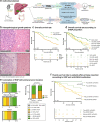
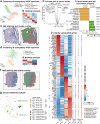
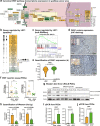
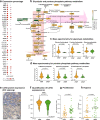
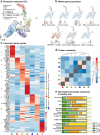
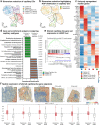
References
-
- Galjart B, Nierop PMH, van der Stok EP, van den Braak RRJC, Hoppener DJ, Daelemans S, Dirix LY, Verhoef C, Vermeulen PB, Grunhagen DJ. Angiogenic desmoplastic histopathological growth pattern as a prognostic marker of good outcome in patients with colorectal liver metastases. Angiogenesis. 2019;22:355–368. doi: 10.1007/s10456-019-09661-5. - DOI - PMC - PubMed
-
- Hoppener DJ, Galjart B, Nierop PMH, Buisman FE, van der Stok EP, Coebergh van den Braak RRJ, van Amerongen MJ, Balachandran VP, Jarnagin WR, Kingham TP, et al: Histopathological Growth Patterns and Survival After Resection of Colorectal Liver Metastasis: An External Validation Study. JNCI Cancer Spectr. 2021;5. - PMC - PubMed
Publication types
MeSH terms
LinkOut - more resources
Full Text Sources
Medical

